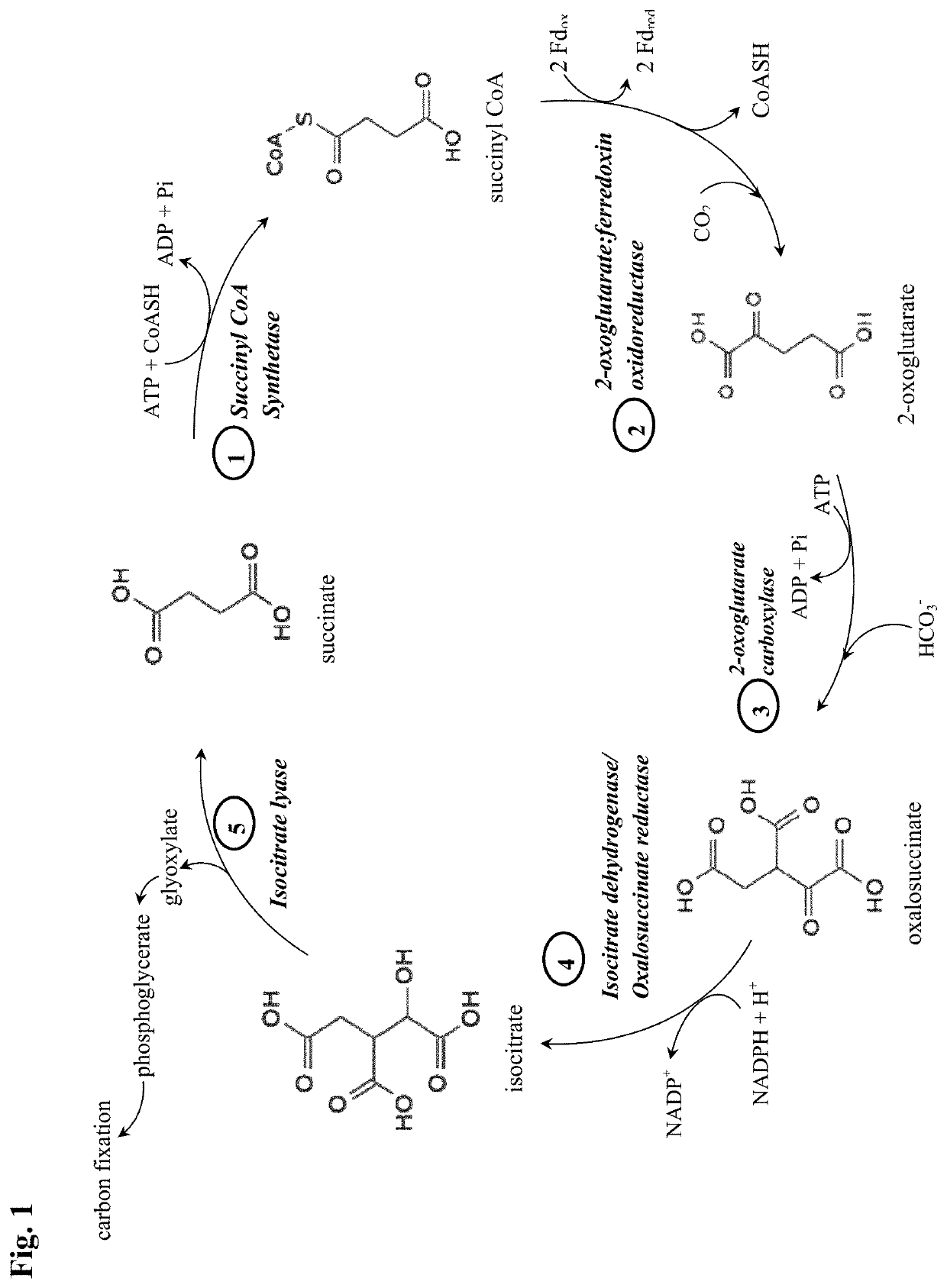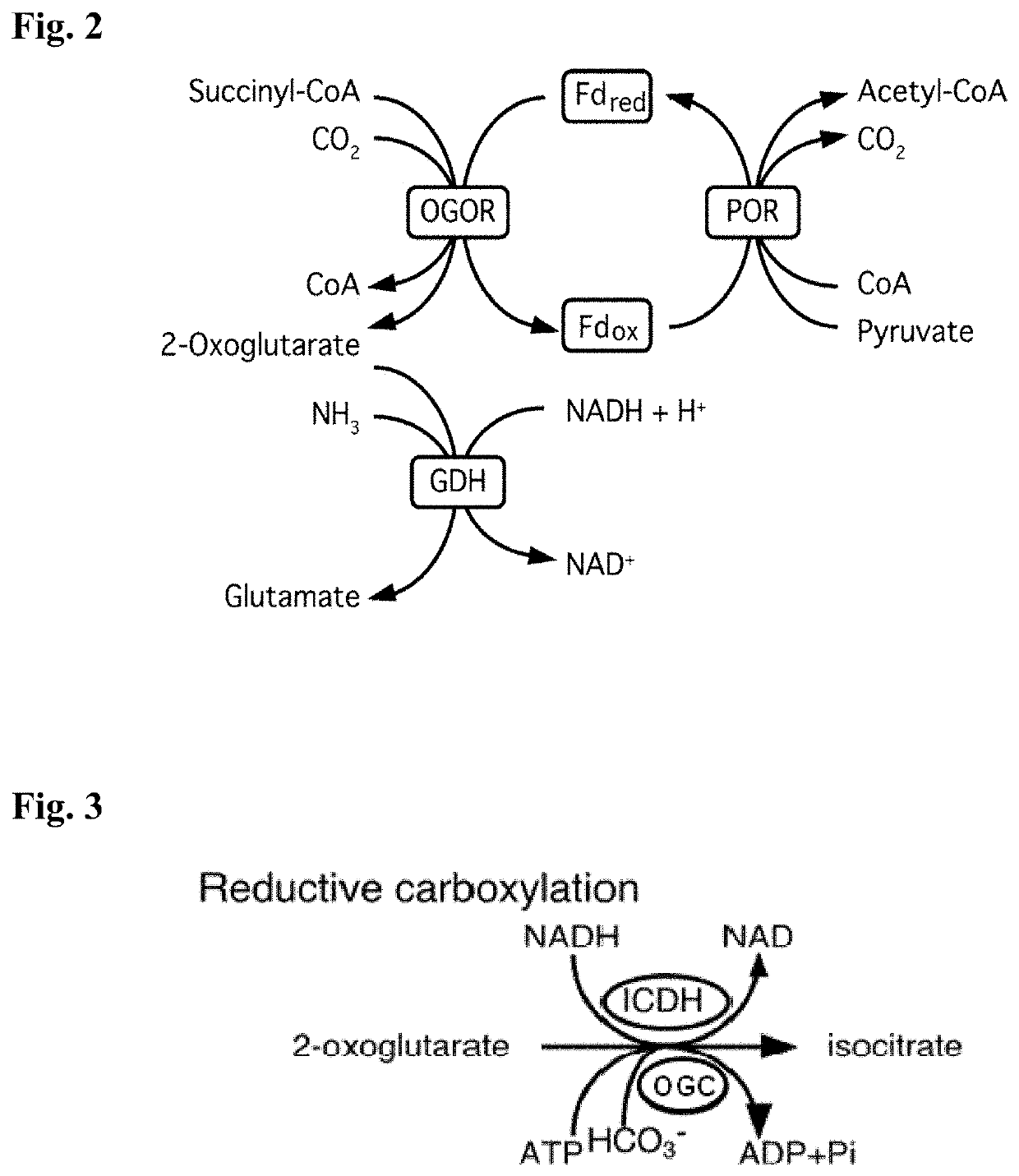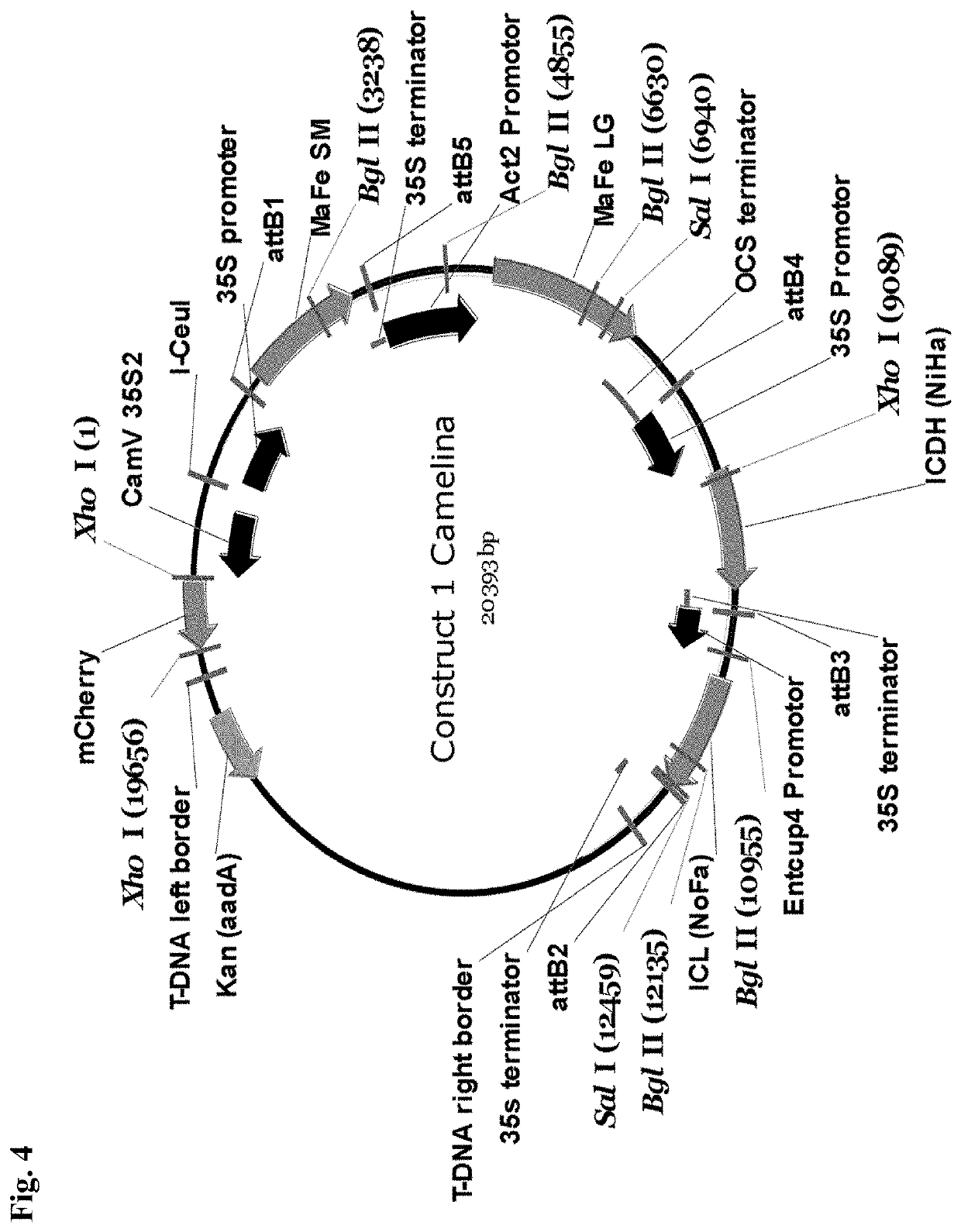Synthetic pathway for biological carbon dioxide sequestration
a carbon dioxide and biological carbon dioxide technology, applied in the direction of lyases, ligases, viruses/bacteriophages, etc., can solve the problems of inefficient csub>3/sub>plants, net loss of carbon, and inefficient process, so as to improve the efficiency of co2 fixation and increase the biomass production of plants
- Summary
- Abstract
- Description
- Claims
- Application Information
AI Technical Summary
Benefits of technology
Problems solved by technology
Method used
Image
Examples
example 1
etic crTCA Pathway Enzymes
[0202]Increasing the productivity of a C3 plant such as camelina to levels seen for C4 plants (e.g. corn) requires improving photosynthetic carbon fixation. One limiting factor is the oxygenase activity of the CO2-fixing Ribulose 1,5 bisphosphate Carboxylase / Oxygenase (RUBISCO) that reduces the photosynthetic productivity by up to 30%. The present invention provides methods and compositions for improving carbon fixation in plants by introducing a synthetic carbon fixation pathway that is independent of RUBISCO but works in concert with the existing Calvin Benson cycle.
[0203]Specifically, this invention provides a “condensed reverse TCA (crTCA) cycle,” that employs a (1) succinyl-CoA synthetase for catalyzing the conversion of succinate to succinyl-CoA, (2) a 2-oxoglutarate:ferredoxin oxidoreductase for converting succinyl-CoA to 2-oxoglutarate (i.e., 2-ketoglutarate), (3) a 2-oxoglutarate carboxylase for converting 2-oxoglutarate to oxalosuccinate, (4) an o...
example 2
Function of the Individual crTCA Cycle Enzymes and Demonstration of the Full Cycle Function Using LC-MS Analysis
[0210]C3 plants do not grow efficiently in hot and / or dry areas because, as the temperature increases, Rubisco incorporates more oxygen. To help overcome this limitation, two sets of bacterial enzymes with carbon fixing activities have been cloned into plant expression constructs for use in the C3 oilseed producing plant Camelina sativa. The first carbon fixing construct known as C1 contains sequences for: (1) a 2-oxoglutarate carboxylase that converts 2-oxoglutarate to oxalosuccinate, (2) a oxalosuccinate reductase (ICDH / OSR) that converts oxalosuccinate to isocitrate, and (3) a isocitrate lyase that cleaves isocitrate into succinate and glyoxylate. The second carbon fixing construct known as C2 contains sequences for: (1) succinyl-CoA synthetase that catalyzes the conversion of succinate to succinyl-CoA and (2) a 2-oxoglutarate:ferredoxin oxidoreductase that converts suc...
example 3
nalysis and Activity for Transient Expression of crTCA Cycle Enzymes in Tobacco
[0220]Each of the cycle genes was used to transform tobacco for transient expression. A strategy similar to the one used for Camelina transformation was used to design these constructs. The synthesized crTCA cycle nucleotide sequences also include a chloroplast localization (ctp from tobacco) sequence and a 6×-his tag to aid in confirmation of expression and affinity-purification for activity assays. Synthesized elements were cloned into pCAMBIA2300_EGFP_BAR (containing the eGFP fluorescent marker and a Basta resistance gene) using HindIII and BamHI restriction sites. Each crTCA nucleotide sequence includes its own 35S promoter and NOS terminator. We have obtained RT-PCR, Western blot and enzymatic assay data for the transient expression for four of the five crTCA cycle enzymes (SCS, KOR, OSR, and ICL) in tobacco. However, we have not yet confirmed the expression of the M. ferrooxydans OGC (MaFe OGC) in t...
PUM
| Property | Measurement | Unit |
|---|---|---|
| Tm | aaaaa | aaaaa |
| temperature | aaaaa | aaaaa |
| pH | aaaaa | aaaaa |
Abstract
Description
Claims
Application Information
 Login to View More
Login to View More - R&D
- Intellectual Property
- Life Sciences
- Materials
- Tech Scout
- Unparalleled Data Quality
- Higher Quality Content
- 60% Fewer Hallucinations
Browse by: Latest US Patents, China's latest patents, Technical Efficacy Thesaurus, Application Domain, Technology Topic, Popular Technical Reports.
© 2025 PatSnap. All rights reserved.Legal|Privacy policy|Modern Slavery Act Transparency Statement|Sitemap|About US| Contact US: help@patsnap.com



